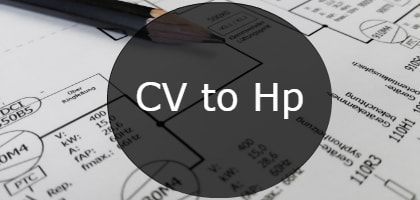Understanding precise equipment amortization is crucial for financial accuracy and compliance. This article explores advanced calculations for exact asset depreciation.
Discover detailed formulas, tables, and real-world examples to master Equipment Amortization Calculator for Accurate Asset Depreciation. Optimize your financial analysis efficiently.
Calculadora con inteligencia artificial (IA) para Equipment Amortization Calculator for Accurate Asset Depreciation
- Calculate amortization for industrial equipment with a $50,000 initial value over 5 years.
- Determine monthly depreciation on office machinery worth $12,000 using straight-line method.
- Evaluate asset value after 3 years with accelerated depreciation for manufacturing tools.
- Input salvage value and useful life to compute amortization schedule for medical instruments.
Comprehensive Tables of Common Equipment Amortization Values
| Equipment Type | Initial Cost (USD) | Useful Life (Years) | Salvage Value (USD) | Depreciation Method | Annual Depreciation (USD) |
|---|---|---|---|---|---|
| Industrial Machinery | 100,000 | 10 | 10,000 | Straight-Line | 9,000 |
| Office Equipment | 15,000 | 5 | 1,500 | Double Declining Balance | Varies Yearly |
| Medical Devices | 50,000 | 7 | 5,000 | Straight-Line | 6,429 |
| Construction Vehicles | 120,000 | 8 | 12,000 | Sum-of-the-Years-Digits | Varies Yearly |
| Computers & Electronics | 8,000 | 4 | 800 | Straight-Line | 1,800 |
| Printing Equipment | 30,000 | 6 | 3,000 | Double Declining Balance | Varies Yearly |
Fundamental Formulas for Equipment Amortization
Calculating accurate amortization requires understanding and applying key formulas tailored to the amortization method selected. The most common methods are straight-line, declining balance, and sum-of-the-years-digits.
Straight-Line Amortization Formula
This method spreads the cost evenly over the asset’s useful life.
- Initial Cost: The purchase price of the equipment.
- Salvage Value: The estimated residual value at the end of useful life.
- Useful Life: The expected lifespan of the equipment in years.
Common values:
- Useful life typically ranges from 3 to 20 years depending on equipment type.
- Salvage value is usually 5% to 20% of the initial cost depending on resale expectations.
Double Declining Balance (DDB) Formula
An accelerated amortization method, which records higher depreciation early in the asset’s life.
- Book Value at Beginning of Year: Cost minus accumulated depreciation.
- Useful Life: Typically consistent with straight-line useful life assumptions.
Values usually result in rapidly decreasing amortization expenses as the book value diminishes.
Sum-of-the-Years-Digits (SYD) Formula
A form of accelerated amortization placing more expense in the early years.
- SYD: Sum of the digits of the useful life; calculated as Useful Life × (Useful Life + 1) ÷ 2.
- Remaining Life: Number of years remaining at the beginning of the current year.
Commonly applied to equipment that depreciates faster early, such as vehicles or technology gear.
Variables Explained and Their Typical Ranges
- Initial Cost (C): Ranges from several thousand to millions USD, depending on asset size.
- Salvage Value (S): Commonly 5%-20% of C, influenced by wear and market demand for used equipment.
- Useful Life (L): Varies widely: computers (3-5 years), machinery (10-15 years), vehicles (5-7 years), medical devices (7-10 years).
- Book Value (BV): Dynamic, decreases annually at calculated amortization amount.
- Depreciation Rate (R): Depends on method: Straight-Line (1/L), Double Declining (2/L).
Real-World Application Examples
Case 1: Industrial Lathe Machine Amortization Using Straight-Line
An industrial lathe was purchased at $80,000, with an estimated salvage value of $8,000 and a useful life of 10 years. Using straight-line amortization, calculate the annual depreciation expense and asset book value after 4 years.
Applying the formula:
After 4 years, accumulated depreciation is 7,200 × 4 = 28,800 USD.
Therefore, book value at year 4 is:
This provides precise value tracking for balance sheet reporting and tax accounting.
Case 2: Office Computers Using Double Declining Balance Method
An office purchased computers for $20,000 with 5-year useful life and no salvage value. Calculate the first three years amortization expenses using DDB.
Depreciation rate = 2 ÷ 5 = 40%
- Year 1: Expense = 20,000 × 40% = 8,000 USD; Ending BV = 12,000 USD
- Year 2: Expense = 12,000 × 40% = 4,800 USD; Ending BV = 7,200 USD
- Year 3: Expense = 7,200 × 40% = 2,880 USD; Ending BV = 4,320 USD
This accelerated amortization reflects higher asset value consumption early in the lifecycle.
Additional Considerations for Accurate Amortization Calculations
While formulas provide mathematical precision, practical nuances must be integrated:
- Partial Year Depreciation: Assets purchased mid-year require pro-rata amortization for accurate expense matching.
- Impairments: Unexpected damage or obsolescence may necessitate asset write-downs beyond scheduled amortization.
- Changes in Useful Life: Revised operational plans or usage can extend or shorten amortization schedules.
- Tax Regulations: Depreciation methods and asset classes may be governed by jurisdiction-specific accounting standards such as GAAP, IFRS, or local tax codes.
Staying current on regulatory updates and consulting authoritative sources like the Financial Accounting Standards Board (FASB) and International Accounting Standards Board (IASB) is vital.
Technical Implementation of Equipment Amortization Calculator
Developing a reliable calculator involves precise algorithmic implementation of formulas with dynamic input handling for variables such as initial cost, salvage value, useful life, and amortization method.
Features enhancing calculator accuracy and user experience include:
- Responsive design adaptable for desktop and mobile devices.
- Selection of amortization methods with contextual formula application.
- Exportable amortization schedules in formats such as Excel or PDF for record-keeping.
- Integration with AI-powered chatbots to assist users in data input and interpretation.
For developers, leveraging JavaScript libraries like React or Vue.js combined with backend validation ensures robust and scalable calculators.
Reliable Resources and Further Reading
- Financial Accounting Standards Board (FASB)
- International Financial Reporting Standards (IFRS)
- Investopedia – Depreciation Explained
- AccountingTools – Equipment Amortization Concepts
In conclusion, mastering equipment amortization requires comprehending diverse methods, precise formula application, and ongoing regulatory awareness. Implementing these into a calculator framework elevates asset management and fiscal reporting to professional standards.


